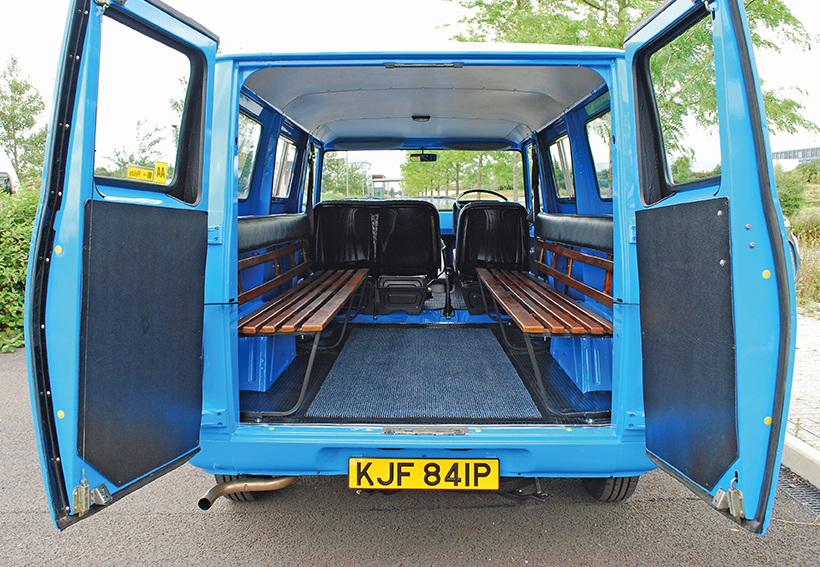

Load-sensing valve standard on all models.Self-adjusting drums all around on CF2/350 models.Front disc brakes with self-adjusting rear drums on CF2/230 to CF2/280.Choice of axle ratios on nearly all models.GM automatic transmission optional on most models.ZF 5-speed overdrive all-synchromesh gearbox standard on all long wheelbase models and optional on others.4-speed GM all-synchromesh gearbox on short wheelbase models.The diesel engines remained the 2.3 (with the 2.0 available in continental Europe) but the old Vauxhall slant fours were replaced by a 2.0 L (1,979 cc), 78 hp (58 kW) version of General Motors' corporate cam-in-head four cylinder.

In 1984 the CF was renamed CF2 and basically only received mechanical upgrades. (The CF1 "facelift" is often confused with being a CF2 because it's difficult to tell them apart from the exterior.)

The 1.8 and 2.3 litre petrol units remained the same. Units exported to Germany (Bedford Blitz) received a smaller, 2.0 L (1,998 cc) diesel, producing 60 PS (44 kW 59 hp).
Bedford cfs series#
The CF series 1 facelift was introduced in 1980, introducing the 2.3 L (2,260 cc) Opel 23D diesel engine with 61 hp (45.5 kW). A standard panel van which was intended to rival the Ford Transit the special van body (essentially a self-contained cab with a general-purpose chassis onto which a wide range of custom-built bodies or beds could be built), and the Dormobile (caravanette). The Laycock type of overdrive was available to order or on the later Vauxhall four-speed models.
Bedford cfs manual#
Several different manual transmissions were used, namely the Vauxhall three-speed, four-speed, Bedford four-speed, ZF four-speed, ZF five-speed, and the General Motors automatic. The front independent suspension featured a double wishbone layout with coil springs and telescopic shock absorbers, while the rear wheels were suspended by a combination involving a live axle and traditional long single-leaf springs. The Bedford used the same basic suspension lay-out as the Vauxhall Victor, though married to greater wheel arch clearances and calibrated for greater weight carrying capacity. This was as an answer to the rival Ford Transit range, which in Australia used six-cylinder engines from the Ford Falcon vehicles. In Australasian markets, the CF could be optioned with Holden six-cylinder units, in 2,850 cc (173.9 cu in) and 3,310 cc (202.0 cu in) forms. In 1977, a 2.1 l (2,064 cc) overhead valve (OHV) diesel engine from Opel replaced the outdated Perkins units. A four cylinder 1.8 l (1,760 cc) Perkins diesel engine could be specified for an extra GB£130 (1969), while a larger 2.5 l (2,523 cc) version was used for heavier versions. Apart from an increased engine capacity from 1.6 l (1,598 cc) to 1.8 l (1,759 cc) units and from 2.0 l (1,975 cc) to 2.3 l (2,279 cc) in 1972, the power units remained unchanged. The engine was the well-proven Slant Four engine which was introduced for the Vauxhall FD Victor models in 1967. The CF could be specified with a sliding door in the side panel directly behind the passenger door, and it was generally with this layout that the van was also commonly used as a base vehicle for a caravanette. Introduced November 1969 to replace the 17 year old Bedford CA, the CF van variants soon became some of the most popular light commercial vehicles on British roads.


 0 kommentar(er)
0 kommentar(er)
